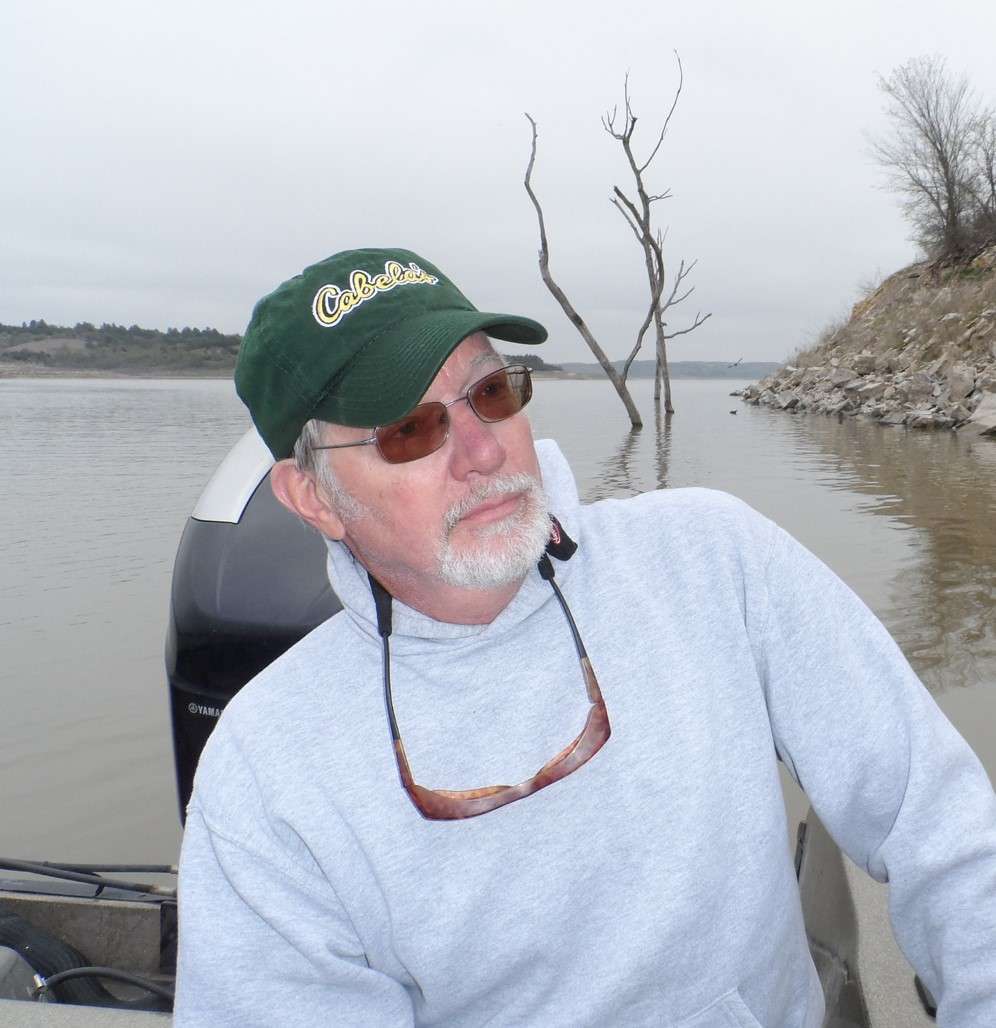Just north of Inman is an infamous intersection with sinkholes of various sizes on all four corners called “Curley’s Corner.” A well known local guy, “Curley” Neufeldt and his family lived there and actually had to eventually move because the house kept sinking. One of the sinkholes has dead standing timber in it and covers a few acres when full, often making it popular with waterfowl. As we approached Curley’s Corner early Easter Sunday morning on our way out of town, a large “feathery” looking patch covered a portion of the wooded sinkhole. We stopped to look and ponder what we were seeing, and as we sat there, heads began popping up out of the feathery mass. It was a big group of white pelicans, all with their heads down and huddled together to keep warm in the cold, blustery north wind.
Mike Rader, Wildlife Education Supervisor for the Kansas Dept of Wildlife, Parks and Tourism (KDWPT) told me white pelicans are migratory and nest north in Minnesota, the Dakotas or southern Canada, so the pelicans we see this time of year are heading from Texas or wherever in the southern US they could find open water in winter, to their nesting grounds up north. I asked him about the white pelicans we see around Kansas lakes all summer, and he says those are probably birds that are either too young or too old to breed, or were sick or injured and couldn’t make the migration trip for whatever reason.
White pelicans are big birds; fully grown adults can weigh nearly twenty pounds, can stand 4 feet tall and can have a wingspan greater than 7 feet. There is no visible distinction between males and females (thankfully they can tell the difference.) Since they are such big heavy birds, they would never successfully migrate if they had to flap their wings most of the time like ducks or geese, so they have to rely on finding thermals to ride during most of their migration journey. During spring and fall we can sometimes see big groups of them high in the sky soaring around in circles. Rader says they are not just out for a cruise, but are in fact finding thermals to help them continue their migration flight.
Once in their summer breeding grounds up north, females nest in colonies sometimes numbering in the thousands. Rader told me females lay only 2 eggs, and other information suggested clutch sizes to be from 1 to 6 eggs. However Rader and all other sources I found agreed that only 1 chick from each nest usually survives to adulthood. During breeding season both male and female white pelicans develop a very prominent hump on the top of their bills that inexplicably disappears after breeding season ends.
The most prominent feature by far of white pelicans is their immense pouch or throat sac, thought to be the longest bill of any bird. Pelicans use those big pouches much like a fisherman uses a dip net to scoop fish from the water. One biologist I spoke with told me he has seen pelicans with carp weighing several pounds in their pouch, which is thought to hold upwards of 3 gallons of water. White pelicans are not diving birds, but use a feeding method known as “synchronized or coordinated feeding” where large groups of them work together to force fish into shallow water or into tight schools where the birds use those big pouches to scoop fish from beneath the surface. Once in the pouch, a backward toss of the head sends the fish whole and still alive into their throat and drains water from the pouch at the same time. Warnings that white pelicans eat hordes of sport fish are unfounded, as research shows the bulk of a white pelican’s diet consists of rough fish like carp, drum and buffalo.
With a diet like that, sounds to me like everyone with a farm pond should have a resident pelican to keep the carp out of there pond! The next time you’re at the lake, look for a group of pelicans, which by the way is called a brief, a pod, a scoop or a squadron, and watch them soar above you on the winds, or watch them fish. They’re a little majestic, a little handsome and a little goofy, but they really are quite interesting and majestic birds; white pelicans are yet another reason to Explore Kansas Outdoors.
Steve can be contacted by email at stevenrgilliland@gmail.com



